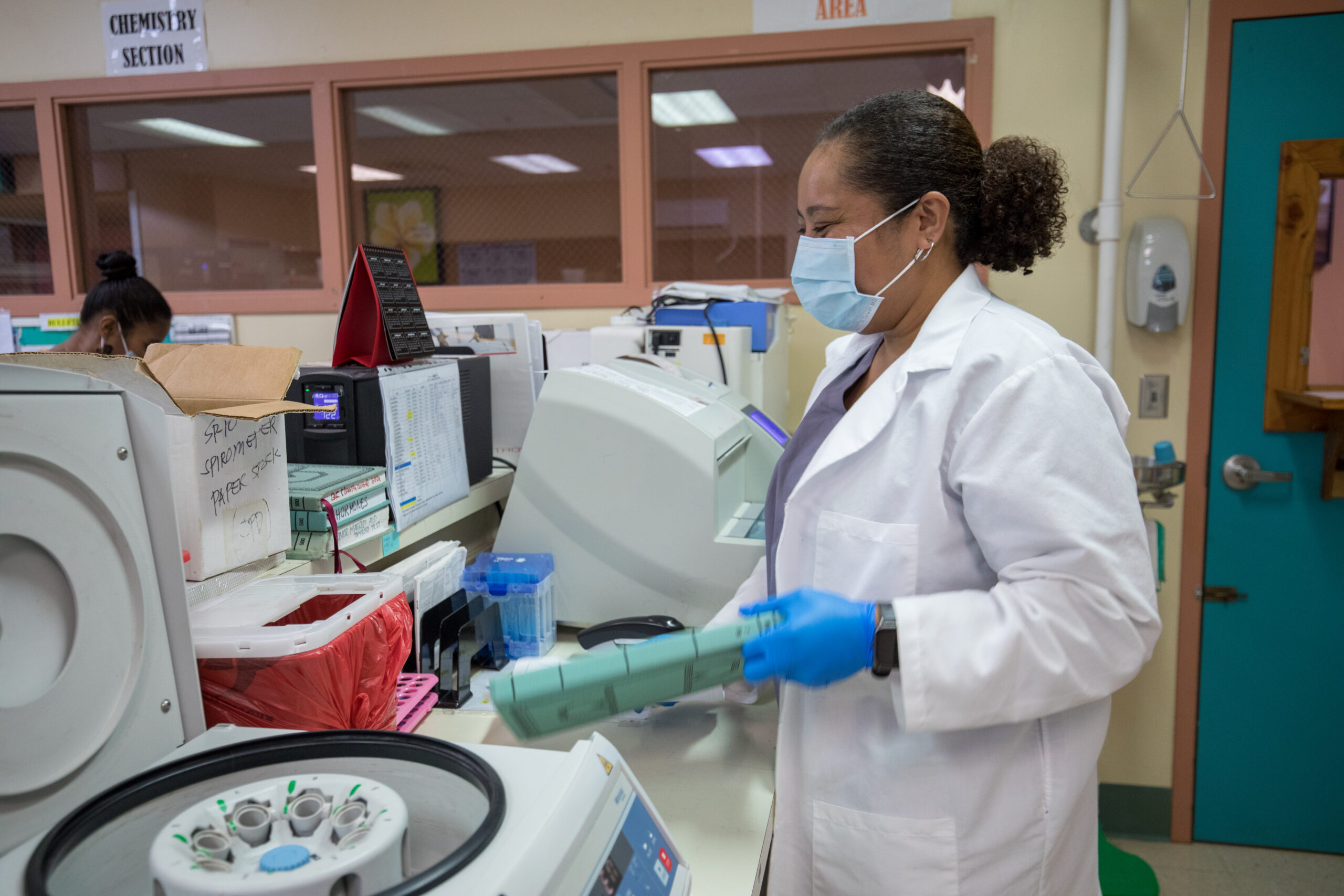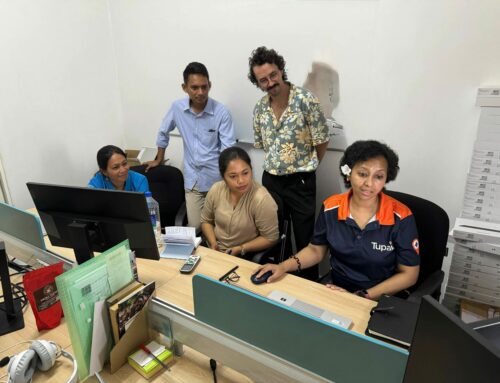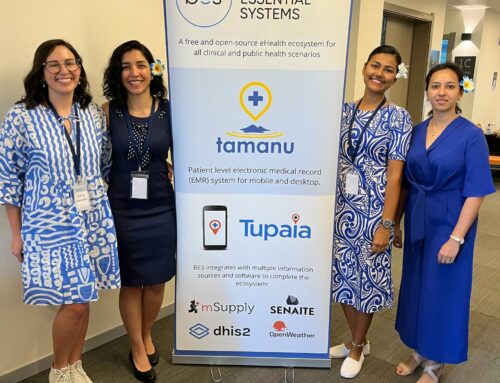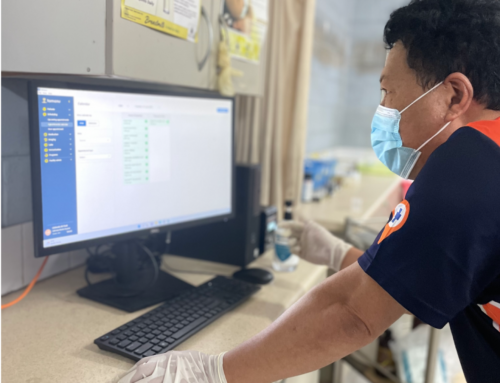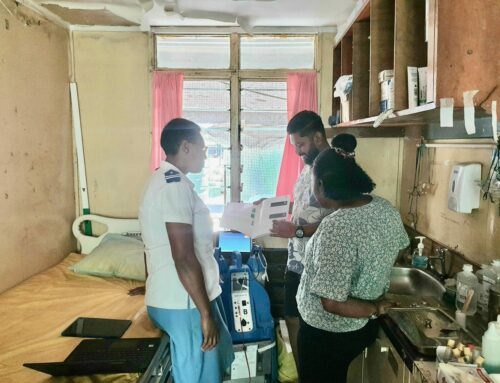BES and the Palau Ministry of Health have completed a full integration between Tamanu and SENAITE using the health data exchange standard called FHIR. The system went live last week and in less than one week, 1092 individual lab tests have been sent from Tamanu to SENAITE across 299 requests.
The new integration will improve patient outcomes and free up staff time – there will be no paper requests going missing, less data transcription, and much faster return of results back to clinicians. The milestone was achieved in close collaboration with Palau Ministry of Health staff and the leadership team at Belau National Hospital.
“Sample registration and report publication is so much more efficient… we can now actually concentrate more on analytical procedures and spend less time on admin!”
- Katarina, BNH laboratory team member (pictured below)
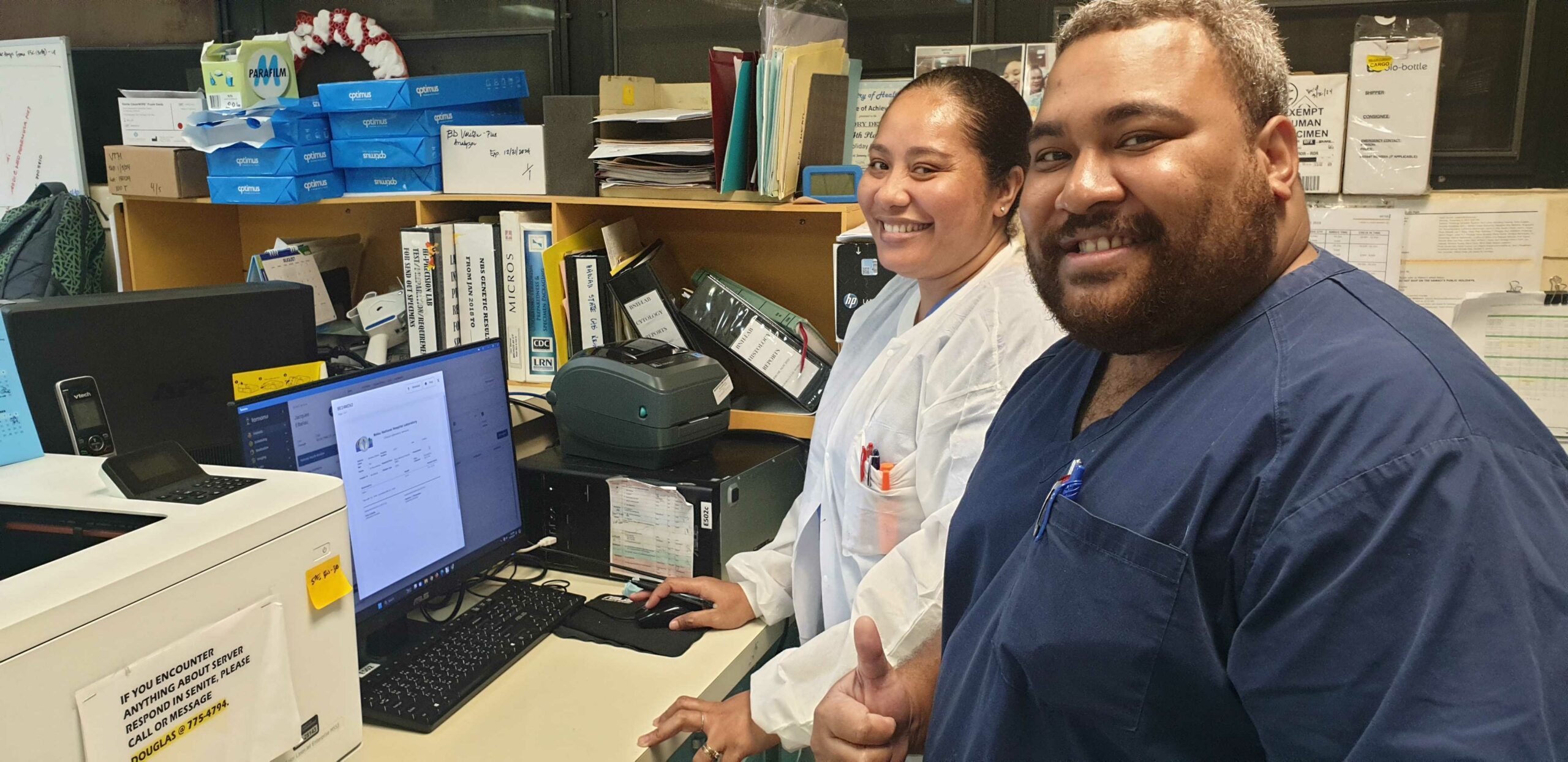
Hang on… Tamanu? SENAITE?
Slow down.
Tamanu is BES’ free and open-source Electronic Medical Records software, built as a birth-to-death health record covering every encounter with the health system. This includes tertiary hospital encounters, where it is common for patients to require laboratory tests and imaging procedures.
SENAITE is a free and open-source Laboratory Information System, which is used to manage the unique workflows and data needs of clinical and public health laboratories. BES implement SENAITE with the support of NaraLabs, who provide contributions to the SENAITE software project and help to maintain implementations around the world.
And they’re now integrated?
Tamanu and SENAITE have actually been integrated for some time. Tamanu acts as a ‘Patient Master Index’, where patient records are created and maintained, whilst SENAITE ‘calls’ that patient information from Tamanu every few minutes, so that laboratory staff can look at the same patient in SENAITE that they know already exists on Tamanu.
This integration goes much further – laboratory requests created in Tamanu are now received automatically by SENAITE, so that nothing needs to be transcribed in the laboratory. When the results are entered into SENAITE, these are automatically returned to Tamanu – so that clinicians can see them much faster and transcription mistakes are avoided.
We have done this using a standard called HL7 FHIR.
You know what I’m going to ask next. Don’t make me do it.
OK, you broke me. What is HL7 FHIR?
HL7 FHIR (Fast Healthcare Interoperability Resources), is a data standard which allows the exchange of healthcare information between different systems in a fast and – well, standard – way. It allows information from one system to be ‘translated’ into a structure that other systems can understand and then convert back into the structure they need to operate.
For computer nerds, it defines the structure of a REST API (Application Programming Interface) but for the rest of us, it just makes it possible for different digital health systems to share data more easily (and way more securely).
Tamanu uses FHIR to exchange health data with other software in a hospital or health service. An example would be a clinician who orders an x-ray using Tamanu – but the radiology department (who are responsible for performing the procedure) use different software to record and store the image. This is normal because Tamanu isn’t built to do everything; some very specific requirements are needed to capture and store imaging data.
The radiology software needs to know the details of the x-ray and then needs to return the results to Tamanu. FHIR is a standard way of encoding that data.
Needless to say, health data can become quite complicated with many business rules that often only become apparent during usage. Using a standard like FHIR has enabled us to build Tamanu in a way that leverages the accumulated wisdom inherent in an established framework. In other words, someone else has done the work and solved the problems – we just follow their instructions!
As part of our build up to the release of Tamanu 2.0 this year, we have been building a series of integrations, exposing data that can be used – such as in the radiology example above but also other workflows, like sending lab requests and getting results from lab software, sharing patient details securely with billing software, and sending patient details to pharmacies.
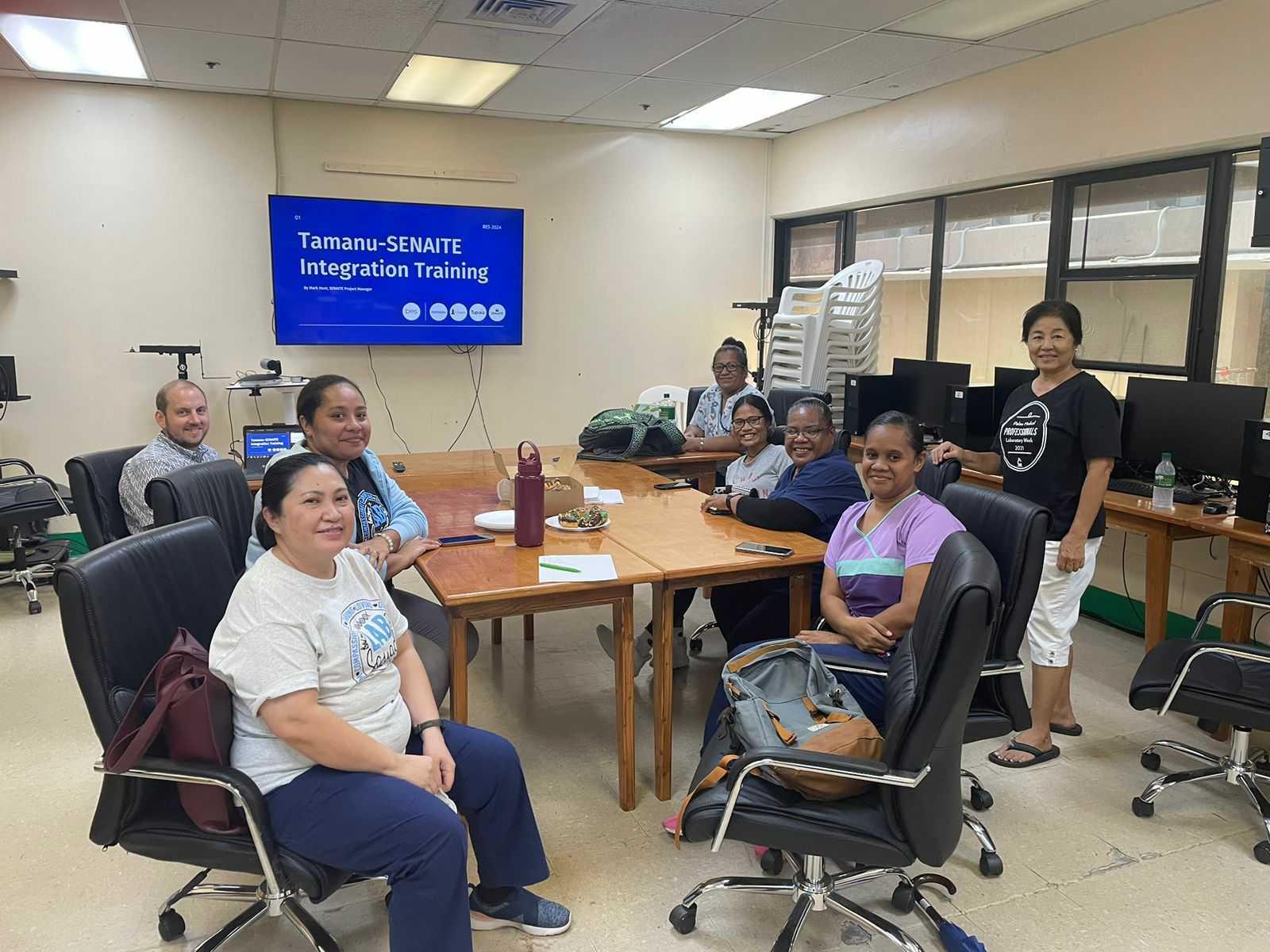
Both lab staff and clinicians have been trained by BES Project Managers, including Mark Hunt, pictured here with the lab team.
That was a lot. Let’s go back to the benefits.
Now, clinicians can create lab requests in Tamanu which are automatically sent to SENAITE. The results of these lab requests are automatically returned to Tamanu.
The clinicians never have to even open SENAITE, they don’t need to learn how to use it, they don’t need logins for it. When they want to view a result, they just log back into Tamanu.
The lab staff use SENAITE to process the request, manage samples, and enter results. They don’t need to switch back and forth between SENAITE and Tamanu and they don’t need to re-enter data that the clinician has already captured.
This isn’t just a software achievement – the integration requires months of careful planning and ‘BA’ work to manage datasets and plan workflows, then a series of training exercises leading up to the go-live day. All of this is achieved within a Change Management framework that brings staff along on a journey that will improve the system but require changes which can feel daunting at first – this is where the local team in Palau have shone. While organisations like BES and NaraLabs can help to provide the software solutions, it is the local teams on the ground that make them work in the Pacific context.
The result is faster lab results, more secure data handling, automated reporting of aggregate results and – ultimately – better patient outcomes.
We’re proud to work with the incredible team at Belau National Hospital in Palau, making it one of the most technologically advanced facilities in all of the Pacific Islands.
